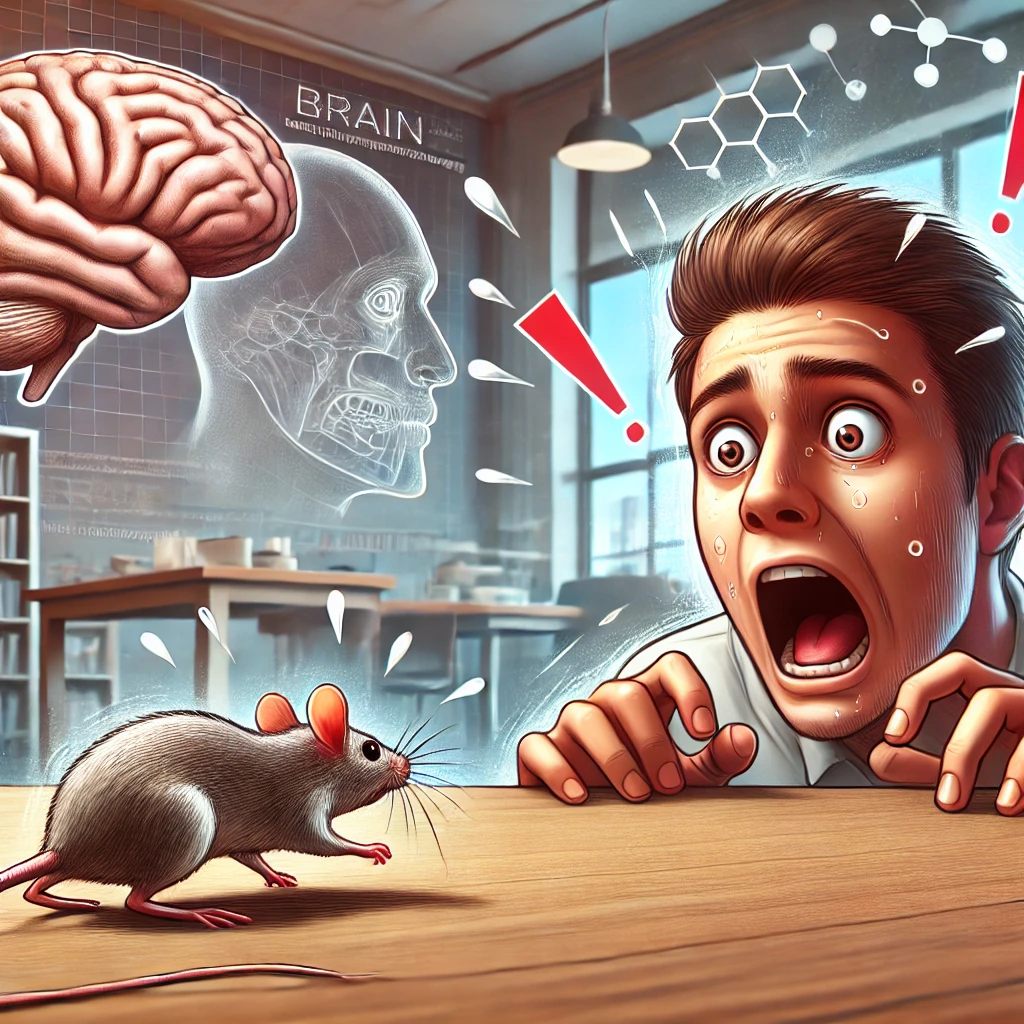When a person who is normally afraid of rats sees one, visual information is transmitted from the brain’s thalamus to the amygdala and visual cortex, causing them to scream and run away. In a fearful situation, the sympathetic nervous system is activated, releasing adrenaline, which increases heart rate and breathing rate. However, intense fear activates the parasympathetic nervous system, which can lead to fainting. Fear can be learned, and when the amygdala is damaged, the fear response is weakened.
Imagine a situation where a rat appears in front of a person who is normally afraid of rats. He would probably instinctively scream and run away before making a rational judgment. Why? The visual information of the rat is first sent to the thalamus in the brain, which then relays the information to the amygdala and visual cortex, respectively. He screams first because the amygdala, which triggers an immediate physical response as a survival instinct, has a faster processing speed than the visual cortex, which is responsible for rational thought processes. In this way, the amygdala allows us to react quickly to fearful situations.

In general, when a person is faced with a fearful situation, the amygdala activates the sympathetic nervous system. When the sympathetic nerves are activated, the adrenal glands begin to secrete the hormone adrenaline. The adrenaline that enters the bloodstream causes the blood vessels to dilate, the heart rate to increase, and the ejection fraction, the amount of blood the heart pumps out in one beat, to increase. In addition, breathing speeds up, bringing more oxygen into the body than usual. These physiological changes allow your muscles to receive more oxygen and calories than usual, allowing your body to react more quickly to a fearful situation.
However, the fear response isn’t just a physical change. Fear has a powerful psychological impact as well. The cognitive functions of the brain also change in fearful situations. For example, when we feel fear, our thinking becomes simpler and more focused on immediate survival responses. This causes us to make decisions and act faster than usual in fearful situations.
However, if we are faced with a fearful situation that is so intense that we faint, our sympathetic nervous system becomes overly activated, forcing our heart rate and output to increase. When the heart is overstimulated in this way, the parasympathetic nerves are activated and try to stabilize the body. This causes your heart rate and blood pressure to drop, and your pulse rate to drop. A normal adult’s pulse rate is usually between 60 and 80 beats per minute, but if it drops below that, blood flow to the brain eventually becomes insufficient or even stops momentarily. This is why some people faint when they experience severe fear.
Fear can also be learned. Our amygdala is also involved in fear learning, as evidenced by fear conditioning experiments. Fear conditioning is the process of associating a neutral conditioned stimulus that doesn’t trigger a specific response with an unconditioned stimulus that triggers an unpleasant or painful response. Carp, a professor at the University of Vermont, conducted an experiment in which rabbits were presented with an electrical stimulus that triggered an unpleasant or painful response, and the rabbits showed an immediate fear response. He applied a mild electrical stimulus to the rabbits’ paws whenever they heard certain sounds, and no stimulus when they heard other sounds. The conditioned rabbits began to show a fear response to that particular sound, just as they would to the electrical stimulation alone. The rabbits’ fear response was confirmed by the fact that their heart rate increased when they heard the specific sound and their amygdala responded.
However, in rabbits with amygdala damage, the fear response disappears or is weakened. The same is true in humans. In a rare disease called Urbach-Weithe syndrome, the bilateral temporal lobe area that contains the amygdala loses its function due to calcium deposits. These patients are known to have difficulty recognizing the emotion of fear. Their inability to recognize fear makes them desensitized to everyday dangers, which can increase their chances of getting into accidents. This example shows that fear is an essential emotion for survival, but when its mechanisms are not working properly, it can become a threat to survival.